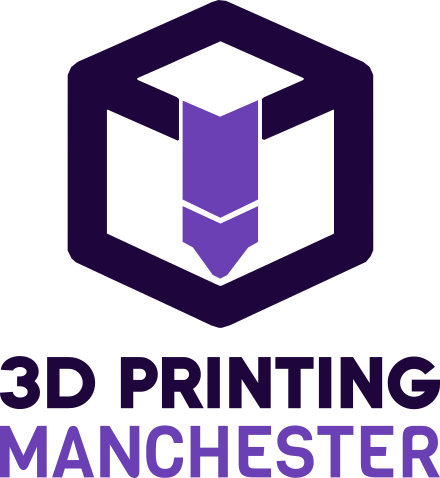Rapid Prototyping Manchester
3d Printing Prototype
One of our 3D printing services we provide includes Rapid Prototyping. Rapid Prototyping is a term associated with 3D printing as a manufacturing technique, that allows us to create a fast fabrication of parts designed with 3D computer aided design (CAD) software.
We use this service to create a wide variety of industrial products for machine parts, ranging from washing machine to car manufacturers. Or alternatively is you are in a hurry to test a new adaptive we at 3D printing Manchester, can help your ideas manifest into realization at a fast rate. With the help of this technique we can create functioning prototypes, shortening the design time, leading towards successful final products. Here at 3D Printing Manchester, we employ a different rapid prototyping techniques or principles: Additive and Subtractive.
Contact Us 24/7
We will get back to you as soon as possible.
Please try again later.
Subtractive Rapid Prototyping
In the subtractive type of rapid prototyping, we remove material from a larger-solid piece of material until the desired design functionality remains. This process gives us the freedom to design, prototype, and manufacture end-use materials. We use it for parts of small and large volume production runs, so we can obtain specific finishes or specific mechanical properties.
When we are handling this process, we work with resins or metal materials. Depending on our application of choice, we can adjust our design to the material for strength, flexibility, chemical resistance, and other critical characteristics.
This technique is also known as
Generative Design.
Additive Rapid Prototyping
It's the exact opposite of the subtractive type process that additive rapid prototyping operates. Here, instead of removing material, our material is added layer upon layer to build up the specific design such as stereolithography, fused deposition modelling (FDM), and a 3D printing model is created.
Generative Design for Rapid Prototyping
With generative design, we've been enabled to create numerous design options by simply re-specifying your requirements and goals, utilising different materials and manufacturing processes. Generative design will automatically produce a ready design, as a starting point or as a final solution.
Rapid Prototyping Services UK
As a result, we create superior 3D designs by interacting with this technology. Employing this technology at 3D printing Manchester, we are constantly bringing innovative products to market in record time. Your product costs will be optimized, thanks to generative design because it can save you money by rooting out over-designed parts or testing many variations of parts. These are designs that, while reliable, may use more materials or complex manufacturing methods than necessary.
Reliability optimized we carry out stress analysis on the generative design to validate the quality and durability of the designs. This saves you costs in manufacturing. At our 3D printing Manchester, our rapid prototyping through the aid of generative design ensures the production of high fidelity prototypes. That is when the proposed finished product matches the client's design requirements very closely. So instead of adding or removing materials after designing, we’d inputted the desired features, tolerances and metrics to the specification of our clients.
Contact us at 3D Printing Service Manchester today, we can provide
rapid prototyping services UK wide and your expertly designed projects that align with your needs.
Need help?
Looking for rapid prototyping services?
Frequently Asked Questions
-
What 3D print files do you accept?
The standard file type for a 3D image will be an STL file. If you have another type please let us know or send it through and we can see if we can convert it and then run it through our 3D printing software which will enable us to know how much material will be required, how long it will take to print and as a result allow us to provide you with an accurate quote.
-
Is there a between 3D printing and additive manufacturing?
The two terms are often used instead of each other and as a result, most people will take them to mean the same thing and as such exchange them as synonyms. However, taking literal definitions 3D printing is describing that 3D printing process is used which will form an object by printing layer upon layer of the material on top of each other whilst additive manufacturing is a wider term that describes any process which causes the material to be added together to create an object. So 3D printing is one type of additive manufacturing, others include electron-beam manufacturing and selective laser melting, which are much less common than 3D printing and as a result additive manufacturing is generally taken to mean 3D printing. Additive Manufacturing is used more frequently to refer to 3D printing in industrial and commercial environments and typically 3D printing machines, such s ours, cater for a much wider range of printing materials such as carbon fibre composites which will have more industrial uses.
-
What if I don't have a 3D file?
No problem - in fact, it's quite common, especially for budding innovators. Our design team can take your 2D drawings or photos, or in the case of legacy parts a broken item and recreate it!
We don't use 3D scanners as our experience of trialling these is that recreating our own files is more accurate and cost-efficient.
-
How large can you 3D print?
Our commercial-grade printers can print items to the approximate size of a shoebox. This is the maximum size for a single print run. Whilst this will limit what can be produced we have on a number of occasions printed larger items by splitting the product into parts which then fit together to form a single larger item. The will not be applicable for all scenarios but again out design team can advise on whether or not this could be feasible for your particular item.

